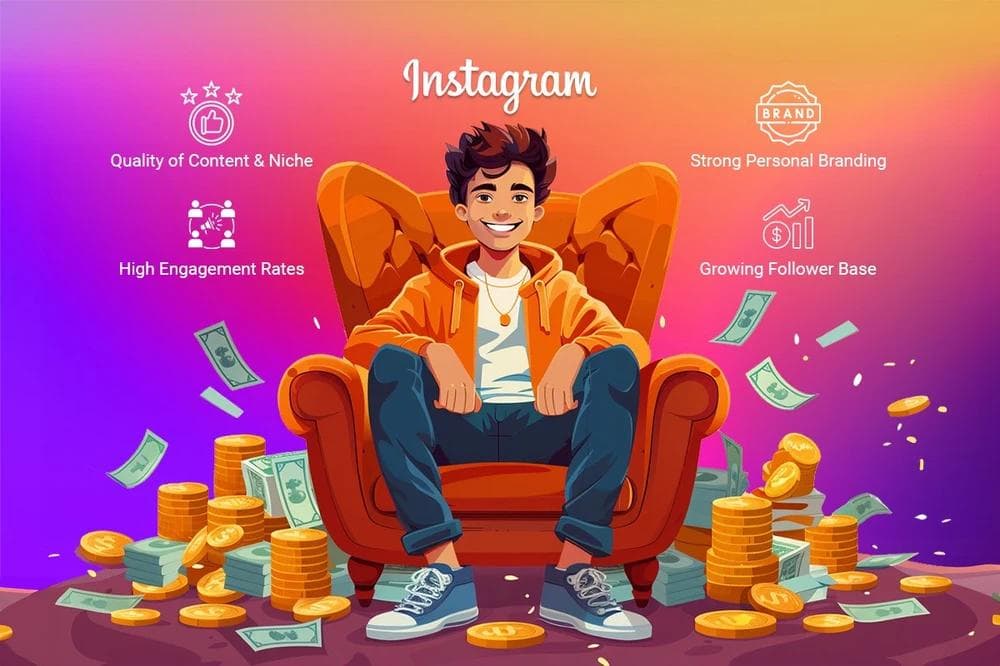🌍 Introduction: The Rise of the Creator Economy
The world is experiencing a massive digital shift. The creator economy — once a niche corner of YouTube and Instagram — has evolved into a multi-billion-dollar global industry. From content creators and streamers to podcasters and online educators, millions of individuals are building careers by sharing their passions, insights, and creativity online.
In 2025, the creator economy is not just about posting content — it’s about building personal brands, nurturing communities, and leveraging platforms to generate sustainable income. Whether you’re an aspiring influencer, content strategist, or entrepreneur, understanding how this economy works is key to long-term success.
💡 What Is the Creator Economy?
The creator economy refers to the ecosystem of independent creators who earn from their skills, content, or influence. It includes:
- Content Creators: YouTubers, podcasters, bloggers, and short-form video makers.
- Digital Influencers: Individuals who partner with brands for sponsored content or affiliate marketing.
- Educators & Coaches: Experts monetizing knowledge through online courses and mentorships.
- Designers & Artists: Selling digital assets, NFTs, or creative services.
In short, the creator economy is democratizing entrepreneurship, allowing individuals to earn directly from audiences instead of traditional employers.
📊 The Numbers Behind the Boom
- According to Influencer Marketing Hub (2025), the global creator economy surpassed $250 billion and is projected to hit $400 billion by 2030.
- Platforms like YouTube, TikTok, Instagram, and Twitch pay billions in creator funds annually.
- Over 200 million people worldwide now identify as content creators in some capacity.
- The average full-time creator earns between $60,000 – $100,000/year, depending on niche and engagement.
💬 Why the Creator Economy Is Booming
- Decentralized Platforms: Social platforms and creator tools allow anyone to build an audience from anywhere.
- Shift to Authenticity: Consumers prefer genuine voices over corporate ads.
- Direct Monetization: Subscriptions, memberships, and digital products let creators earn without middlemen.
- AI & Automation: Tools for editing, analytics, and content generation (like ChatGPT) help creators scale faster.
- Community Commerce: Fans want to support creators directly via Patreon, Ko-fi, or YouTube memberships.
💰 How to Earn as a Digital Influencer
Here’s a breakdown of the most effective income streams in the creator economy:
1. Brand Partnerships & Sponsorships
- Collaborate with brands that align with your niche.
- Negotiate fair rates based on engagement, not just follower count.
- Use influencer marketplaces like Collabstr or AspireIQ to connect with brands.
2. Affiliate Marketing
- Promote products you love and earn commissions on every sale.
- Build trust by sharing honest reviews.
- Use platforms like Amazon Associates, Impact, or ShareASale.
3. Ad Revenue
- Monetize videos on YouTube or podcasts through ad placements.
- The key is consistency and audience retention.
4. Selling Digital Products
- Offer eBooks, presets, templates, or digital courses.
- Platforms like Gumroad, Teachable, and Podia make it easy.
5. Memberships & Subscriptions
- Build loyal communities on Patreon, Substack, or YouTube Memberships.
- Offer exclusive behind-the-scenes content, live sessions, or direct mentorship.
6. Merchandise & Branding
- Launch your own clothing, art, or accessory line.
- Services like Printful and Shopify make merch easy to sell.
🧭 Building a Personal Brand That Stands Out
In 2025, personal branding is everything. To rise above the noise:
- Define Your Niche: Focus on what you’re passionate about and where you can add value.
- Be Authentic: Share your story, struggles, and behind-the-scenes moments.
- Engage, Don’t Just Post: Respond to comments, start conversations, and create community.
- Stay Consistent: Consistency builds trust and algorithmic reach.
- Use Analytics: Track what performs well and adjust your strategy regularly.
⚙️ Tools Every Creator Should Know
Here are top tools to grow and monetize efficiently:
- Canva / Adobe Express: For professional-looking graphics.
- CapCut / Descript: For video and podcast editing.
- Notion / Trello: For content planning.
- Resumeily.com: To build a polished digital resume and track job or collaboration opportunities.
- Linktree / Beacons: To manage multiple links in bios.
🚀 The Future of the Creator Economy
The next phase will be driven by:
- AI-Powered Creativity: Personalized content recommendations, automated editing, and smart monetization.
- Ownership through Web3: Creators earning via NFTs and blockchain-based royalties.
- Micro-Influencers Rising: Brands preferring niche audiences over mega influencers.
- Global Accessibility: More platforms supporting regional languages and creators worldwide.
As technology evolves, so do opportunities. Those who adapt early will shape the next decade of digital influence.
💬 Final Thoughts
The creator economy isn’t slowing down — it’s redefining modern work. With the right strategy, mindset, and tools, anyone can turn creativity into a career. Whether you’re starting out or scaling up, focus on authenticity, consistency, and connection.
So, if you’re ready to step into the creator era — your time is now. Start small, stay genuine, and build something that matters.
